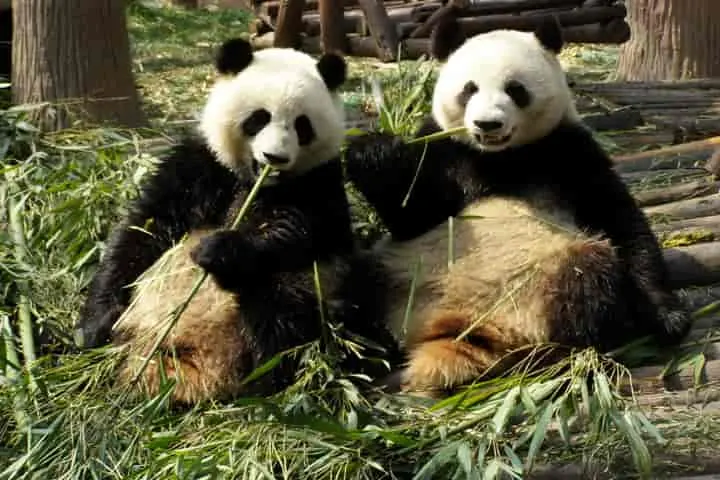The Giant Pandas who have become popular world over being the logo of the World Wildlife Fund has something unusual. It has a thumb which is actually not a thumb, said a report in scitechdaily.com.
It is an extended wrist bone which the mammal uses to hold bamboo. Even during the span of a long evolutionary history, this thumb never became an opposable one and instead became a radial sesamoid. Described as a unique adaptation, this helps them to live off bamboo.
The details of the study about the discovery of the ancestral panda who had this thumb and ate bamboo was conducted by Xiaoming Wang and colleagues from the Natural History Museum of Los Angeles. Wang is a County Curator of Vertebrate Palaeontology there.
For more than a century, scientists were aware of the false thumb in today’s giant pandas or Ailuropoda melanoleuca but they were not able to pinpoint as to how it evolved since there were no fossil records. This changed when from an ancestor of the giant pandas, Ailurarctos which was six to seven million years old, a fossil of the false thumb was found. The fossil was revealed in the city of Zhaotong’s Shuitangba site located in Yunnan province in south China.
This fossil provided an insight into how this extra or sixth digit was used by the pandas’ ancestors and also the proof of their bamboo diet. This provided the scientists a better idea about how this part of the body evolved.
Talking about this find, Wang said: “Deep in the bamboo forest, giant pandas traded an omnivorous diet of meat and berries to quietly consuming bamboos, a plant plentiful in the subtropical forest but of low nutrient value. Tightly holding bamboo stems in order to crush them into bite sizes is perhaps the most crucial adaptation to consuming a prodigious quantity of bamboo.”
The important issue facing the scientists was why this false thumb did not develop? This meant that the present-day pandas’ ancestors should have even less well-developed thumbs. To the surprise of Wang and his colleagues the fossil found had a longer false thumb with a straighter end as compared to the modern pandas who had a shorter and hooked digit.
Answering the vital question as to why the false thumb stopped growing to become a longer digit, Wang said: “Panda’s false thumb must walk and ‘chew’. Such a dual function serves as the limit on how big this ‘thumb’ can become.”
According to the scientists, the shorter false thumbs of the modern panda are a compromise on evolutionary terms with the objective of balancing between the demand to control the bamboo and also the requirement to walk and carry their weight. The hooked tip of the creature’s second thumb allows them to do both as a radial sesamoid — a bone in the animal’s wrist.
Elucidating this, Denise Su, who was the co-leader of the project observed: “Five to six million years should be enough time for the panda to develop longer false thumbs, but it seems that the evolutionary pressure of needing to travel and bear its weight kept the ‘thumb’ short – strong enough to be useful without being big enough to get in the way.”
Su is an associate professor at the School of Human Evolution and Social Change and research scientist at the Institute of Human Origins at Arizona State University.
Summing up the modern panda’s development over millions of years, Wang remarked: “Evolving from a carnivorous ancestor and becoming a pure bamboo-feeder, pandas must overcome many obstacles. An opposable ‘thumb’ from a wrist bone may be the most amazing development against these hurdles.”
Also read: Toothless sea dragons add colour and intrigue to marine life




















